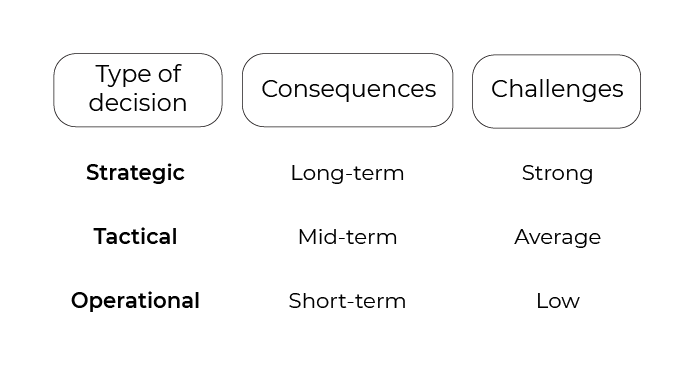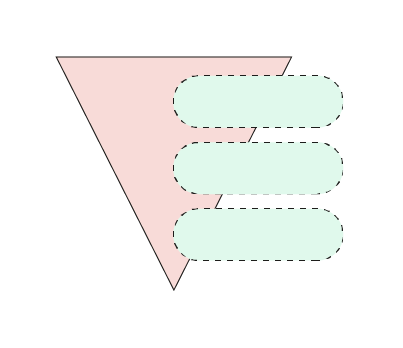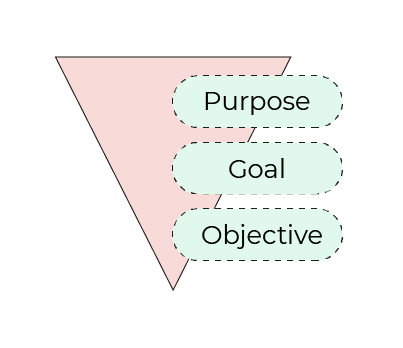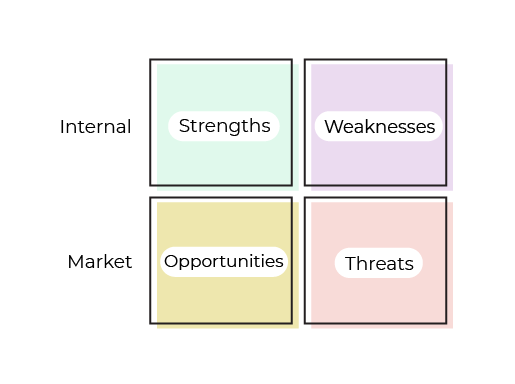Welcome to the second part of the course. 😃 In the following chapters, you'll learn turnkey methods that will help you in your decision-making. To make these methods more concrete, we'll apply them to Emma's situation, which you saw in the previous chapter's video, and then suggest how you can use them in your own contexts. The goal is for you to be able to follow this entire process to make your own decisions.
Are you ready? Let's start with the first step: the qualification of the challenges!
Ask Yourself the Right Questions
Ana Thorsdottir has to solve problems frequently. Let’s see how she does it to get an idea of how you can tackle your problems.
Question #1: What are your challenges?
Igor Ansoff defined three types of decisions and three different contexts. Which one is the most relevant to the one you need to make?

Strategic decisions made by management staff, commit the company over the long-term and can thus be seen as a significant risk to the future. Example: the choice of a diversification strategy, merger/acquisition.
Tactical decisions are made by a company's staff over the mid-term with significant consequences, average risks, and short impacts. Example: recruiting a senior manager.
Operational decisions are made by managers and employees in the short-term with limited risks and very brief impacts. Example: allowing employees to work from home.
Question #2: Is it an individual or collective decision?
The individual decision depends only on you. It's fast because it requires fewer logistics to implement. The personal decision is more subjective and less subject to influence.
The collective decision involves several people to create solutions and make the decision. It takes more time and is considered more relevant. The collective decision can also involve a joint search for answers so that in the end, only one person makes the decision.
You already have an initial idea of the decision you need to make. Let's go further.
Clearly Define Your Objective
Defining your goal before making a decision is essential, and yet, many people forget this step.
Okay... but what does setting a goal mean in practice?
Good question! Let's look into it...
Differentiate Objectives, Goals, and Purposes
What's the difference between an objective, a goal, and a purpose?
Have you finished? Using your definitions, let’s classify these three concepts - objective, goal, and purpose - from the most general to the most specific.

How did you do? The following will help you understand each concept and its hierarchy:
The purpose matches your intention, your vision. It refers to your values, what it means to you, and why it lights a fire in you.
The goal has a strategic dimension: this is what you want to reach, where you want to go.
The objective is more operational: this is the method or actions you'll implement to achieve your goal.

Consider Emma's situation. Can you define her purpose, goal, and objective using the following statements:
"I want to change my career path to UX design."
"I want to make digital experiences easy and enjoyable."
“Starting from October 1, 2020, I will force myself to meet with one UX designer per month for feedback."
"I intend to train myself to learn to be a developer."
What did you write?
Emma's purpose: "I want to make digital experiences easy and enjoyable" is about her vision, what it means to her; it's general.
Emma's goal: "I want to change my career path to UX design" is what she wants to achieve. It is more specific than her purpose but not actionable (yet).
One of Emma's objectives: "Starting from October 1, 2020, I will force myself to meet with one UX designer per month for feedback." It is actionable and precise.
Why is it so important to distinguish these three concepts?
These three concepts create your rocket launcher: they will allow you to rise above all the challenges of your decision before launching off and taking action! To make a decision, you must be clear and define your vision (purpose), your strategy (goal), and the means by which you'll implement your decision (objective). Objectives will drive you to achieve your goals and find your purpose, so let’s take a closer look at what fuels your actual rocket.
Set Up SMART Objectives 🎯
A good objective is SMART and declares your expected results.
Specific: It should focus on one outcome and one skill.
Measurable: It should have a way to validate the outcome.
Attainable It should have concrete steps for achieving the outcome.
Realistic: The steps for achieving the outcome should be doable with your skills and resources.
Time-bound: It should have a time limit to establish a call to action.
Let’s look at Emma’s two objectives:
“Starting from October 1, 2020, I will force myself to meet with one UX designer per month for feedback."
"I intend to train myself to learn to be a developer."
Are these objectives SMART? How would you improve them?
Are you ready to share? Let’s see if we have the same ideas!
“Starting from October 1, 2020, I will force myself to meet with one UX designer per month for feedback."
This is not a smart goal because:
It is:
Measurable (Once per month/one UX designer).
Achievable (She can plan steps to do these actions).
Realistic (She has the resources to complete these steps).
It is not:
Specific because “feedback” is too general. You don’t know what Emma hopes to improve with the feedback.
Time-bound. You know when to start, “on October 1st, 2020,” but not when it will end. If you don’t say when it will end, you don’t know when to evaluate your results.
Using the above feedback, her SMART objective may look like this:
“From October 1, 2020 until February 1, 2021, I will force myself to meet with one UX designer per month for feedback on my UX design portfolio."
It's Your Turn

You're now ready to apply this method to your own situation.
First, think about the decision you have to make and define your purpose and goals.
Next, define three SMART objectives that will help you achieve your goals.
Use the SWOT Method to Collect the Necessary Information
The SWOT matrix is a valuable strategic analysis tool that combines a study of the strengths and weaknesses and the opportunities and threats of the environment to facilitate decision-making. This matrix will allow you to create an inventory, sort through it, and create a comprehensive vision to control the risks associated with your future choices.

How do you complete the matrix?
Let's go back to Emma. She can use this analytical grid in two ways:
On the personal or intrinsic level (strengths and weaknesses).
At the environmental or extrinsic level (the opportunities and threats) over which she has no control.
To complete it, she must ask herself a series of questions about the new profession she wants to join. Here are some examples:
To determine its strengths, Emma can ask herself:
Which of my current skills can I use in my future job?
What talents will distinguish me from my peers?
To underline her weaknesses, Emma can ask herself:
What are my weak points and how might they limit the development of my skills?
What current skills can I improve that will be useful in my future role?
To discover the opportunities, Emma can ask herself:
What could give me an advantage in a given situation?
What emerging trends, markets or new technologies are there in my field?
To identify the threats, Emma can ask herself:
What events could interfere with my decision?
What environmental threats could undermine my project?
Here's the result:
Strengths
| Weaknesses
|
Opportunities
| Threats
|
What is the link between SWOT and SMART goals? 🤔
Understanding your weaknesses and the threats that come from them can motivate you to improve, and more importantly, help you verify that your SMART objectives match the skills you need to improve.
In Emma’s case, some of her weaknesses are addressed in her SMART goal:
“From October 1, 2020 until February 1, 2021, I will force myself to meet with one UX designer per month for feedback on my UX design portfolio."
In these meetings, she can build confidence, learn more about the industry's key aspects, and determine the areas she has no experience in.
It's Your Turn

Think about the four SWOT concepts and list your thoughts about your findings in each box:
Strengths
| Weaknesses |
Opportunities
| Threats |
Remember, your SWOT matrix must be done in line with your objectives and be used to develop your project strategy. The skills should strengthen your weaknesses and help minimize threats.
Let's Recap!
In this chapter, you learned to identify your decision-making challenges and:
Limit uncertainties and clarify actions by setting SMART goals: specific, measurable, ambitious, realistic, and time-bound.
Analyze the advantages and disadvantages of remaining in your present situation using the SWOT tool.
In the next chapter, you'll find solutions to your problems and consult with experts and benchmarking. We will also create an environment where you can nurture both your imagination and creativity.
